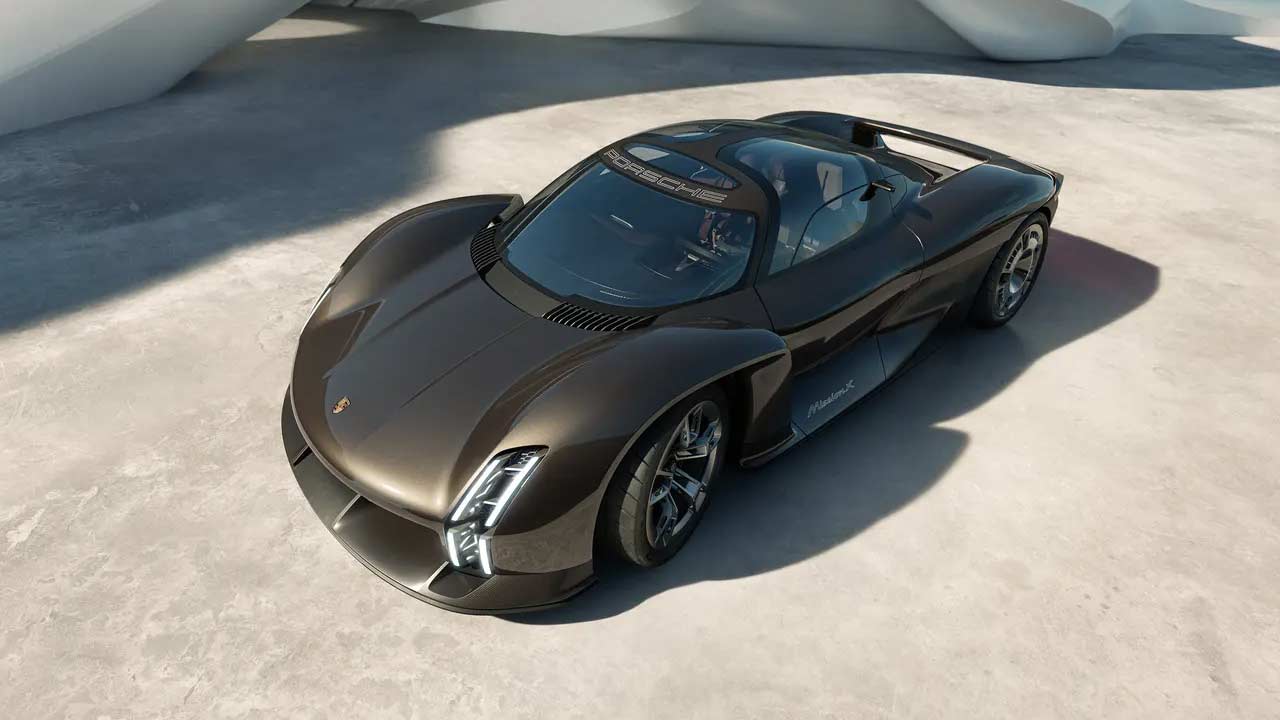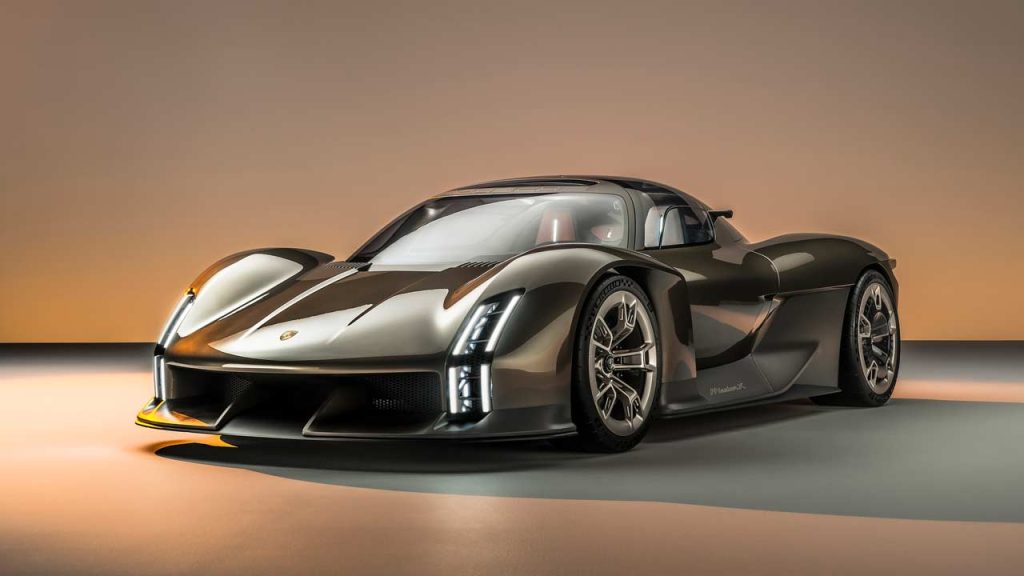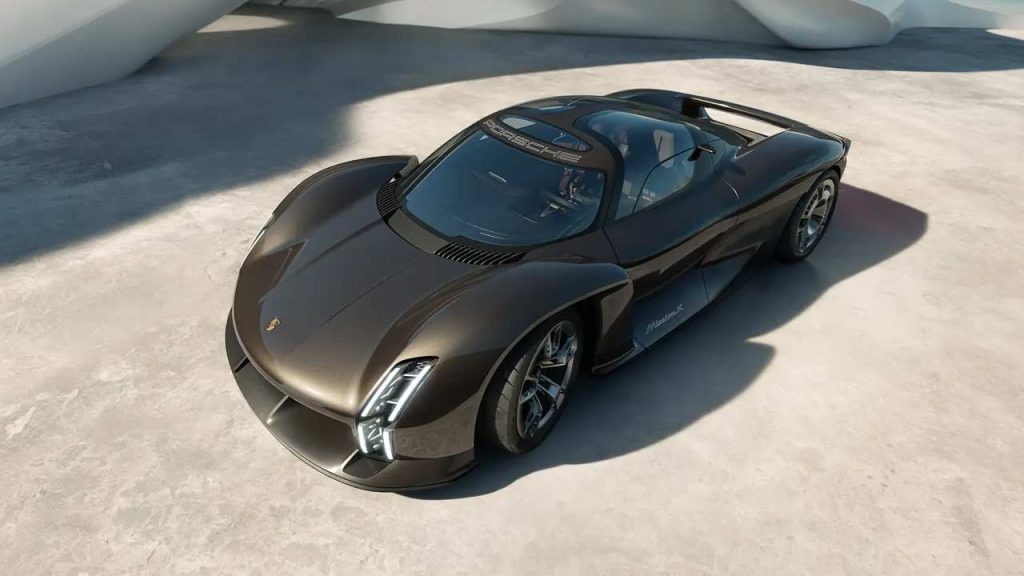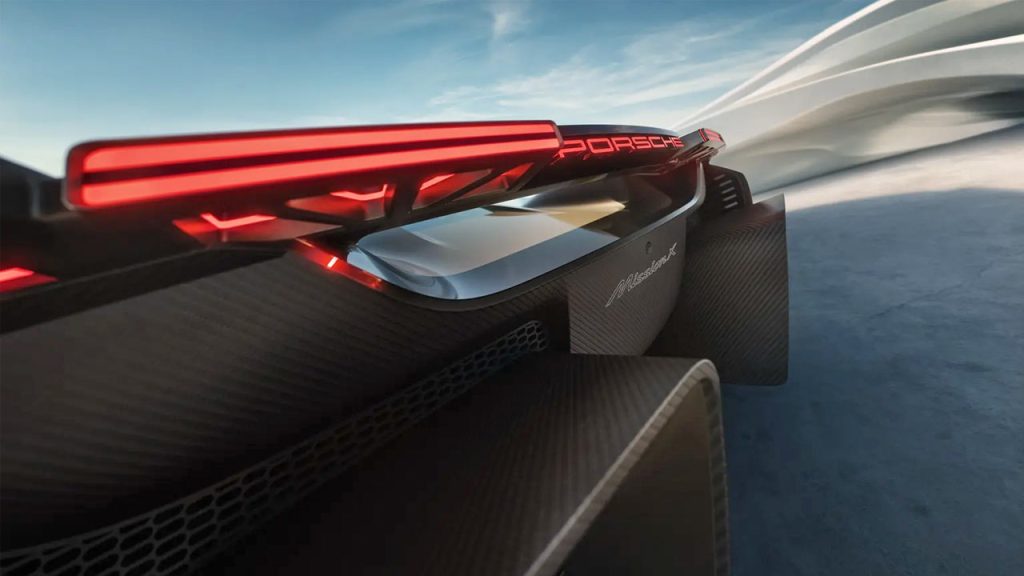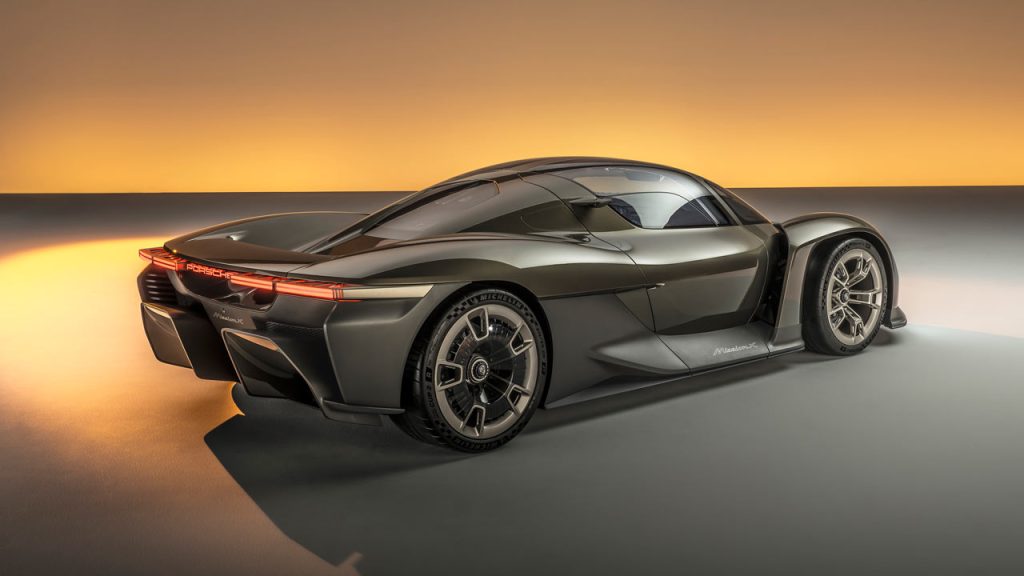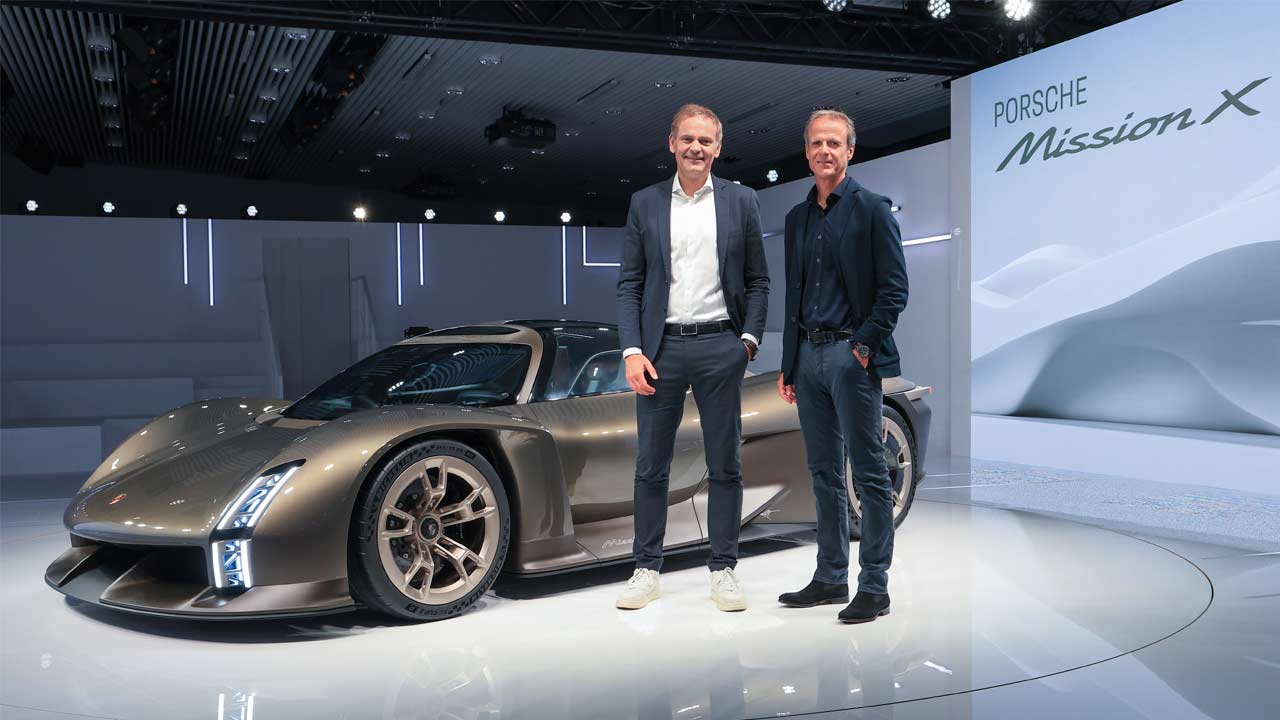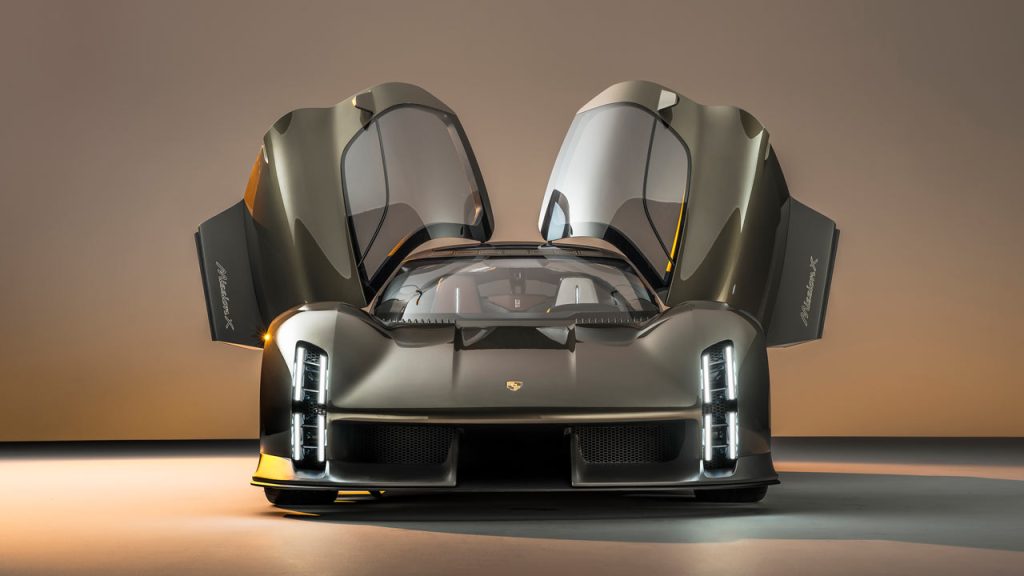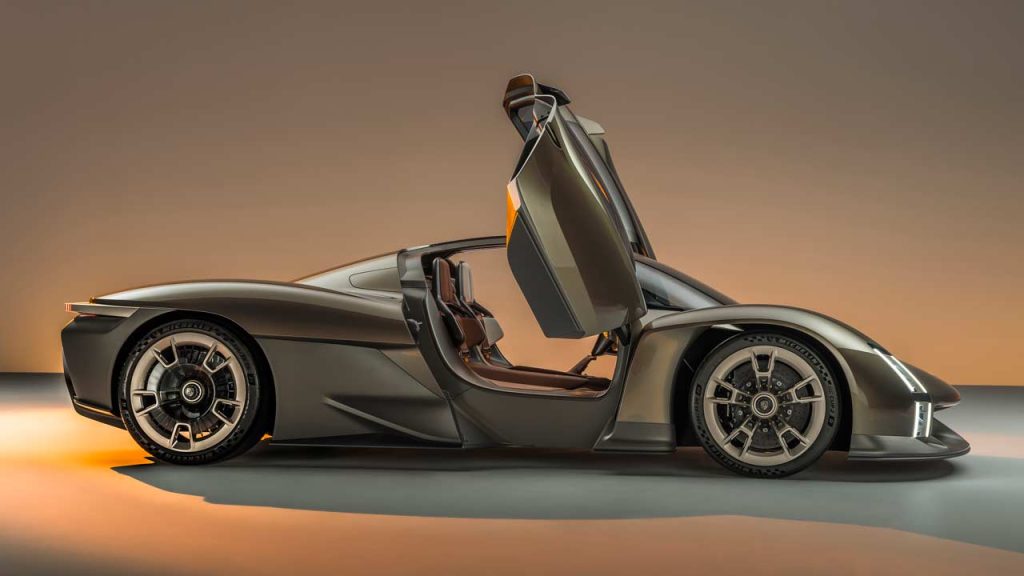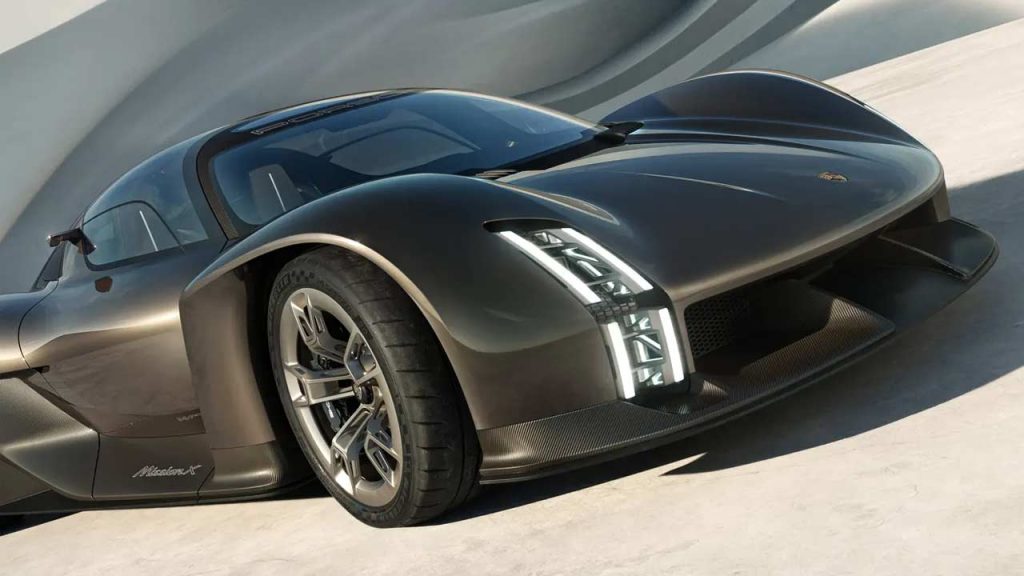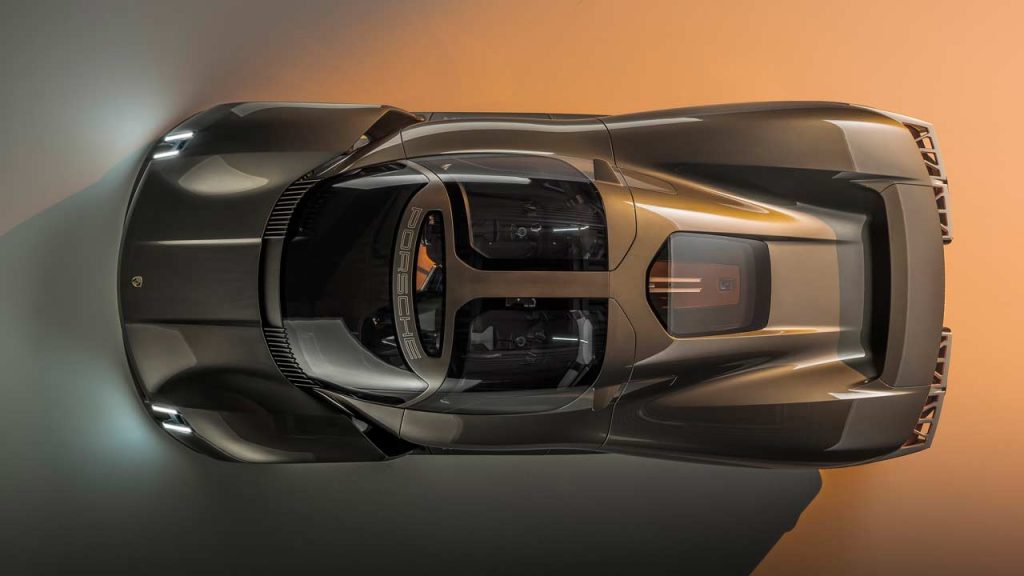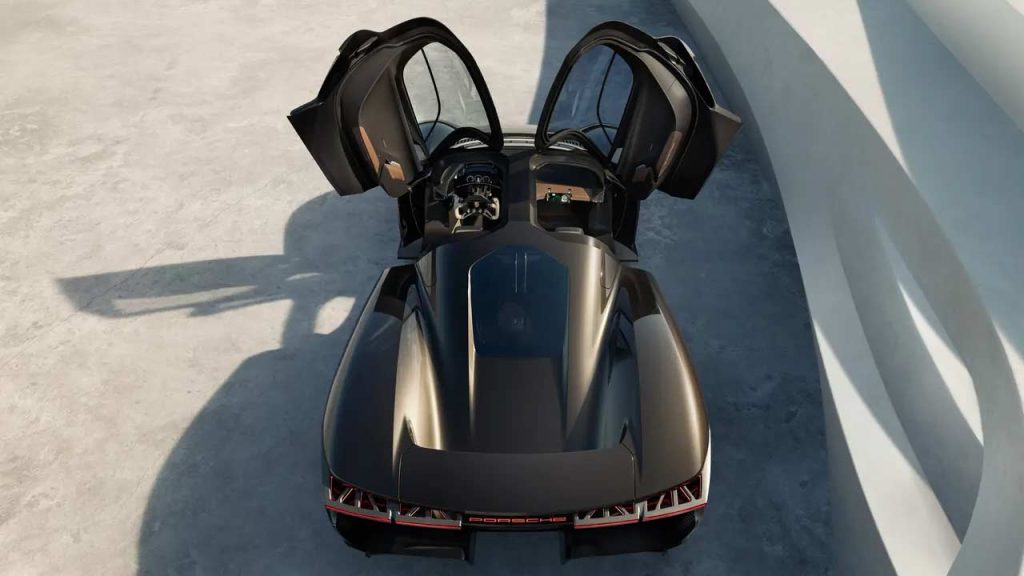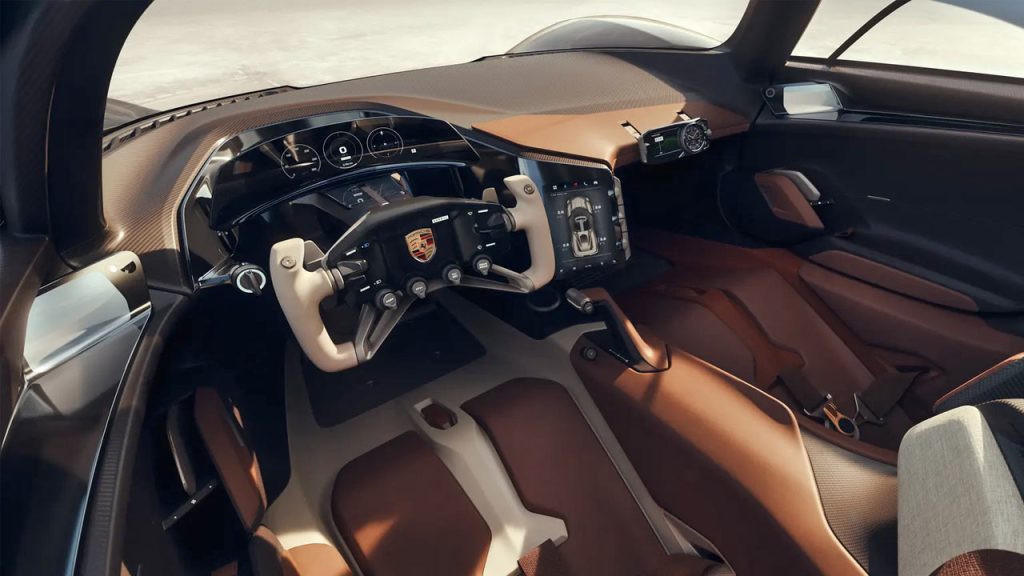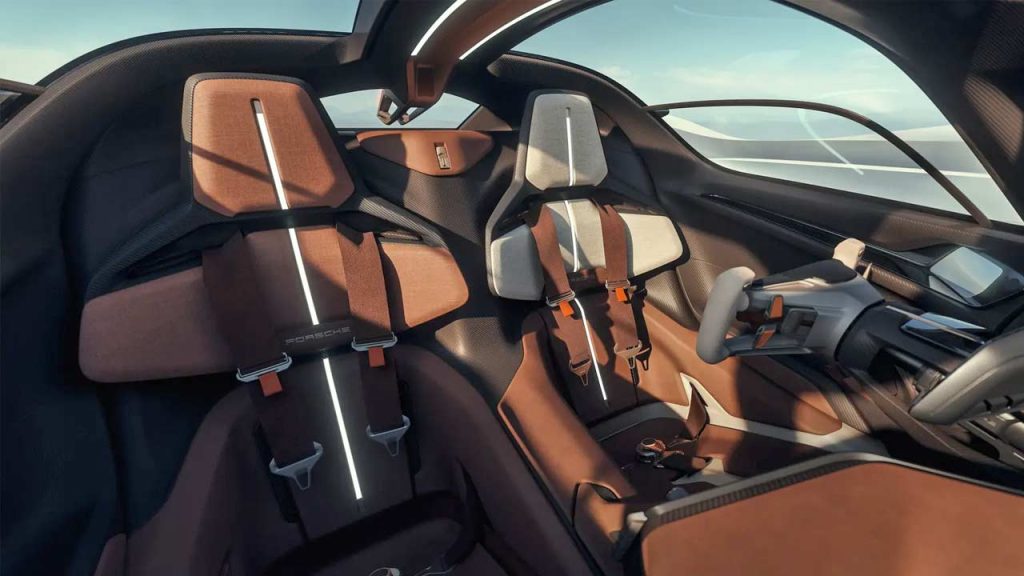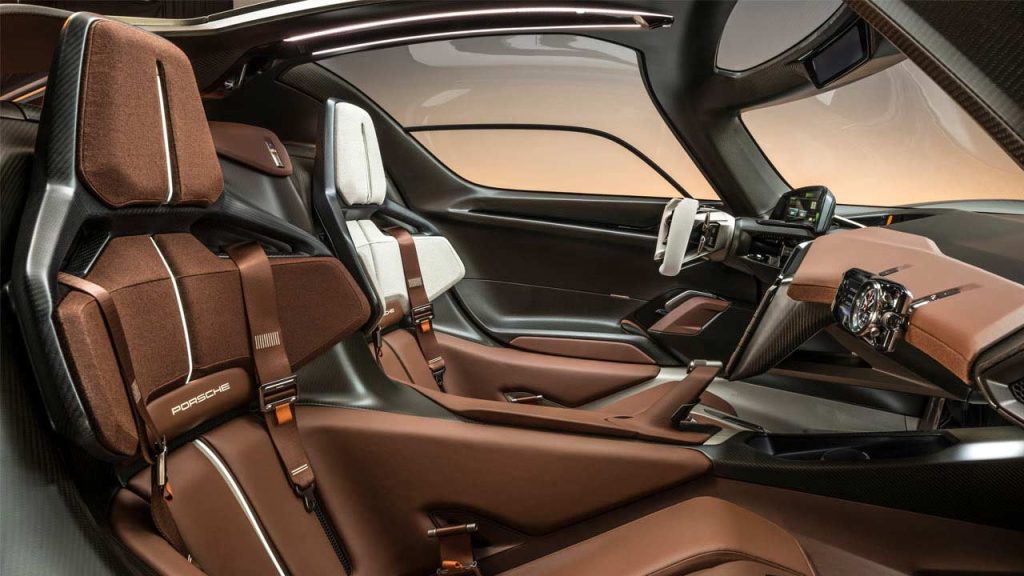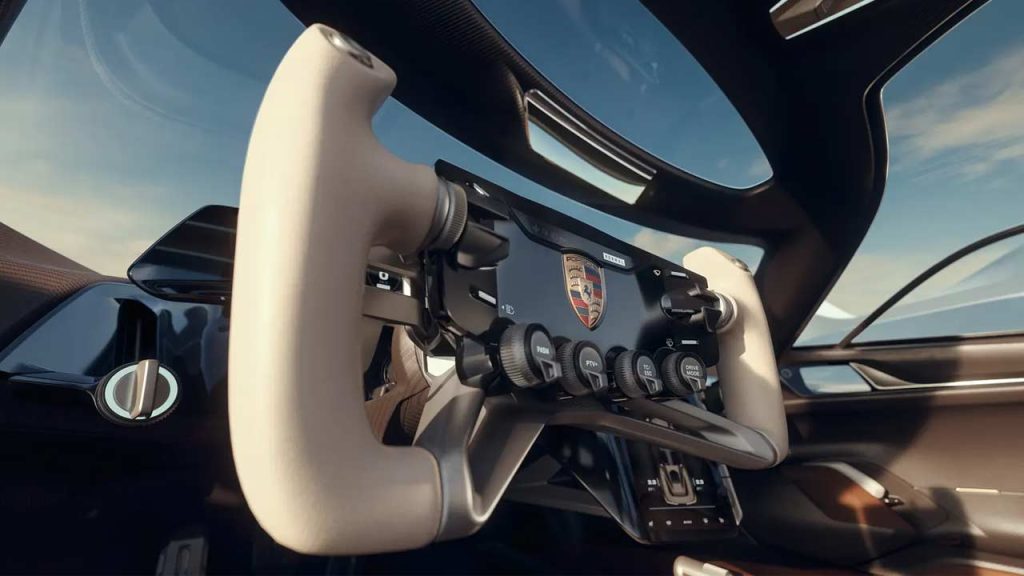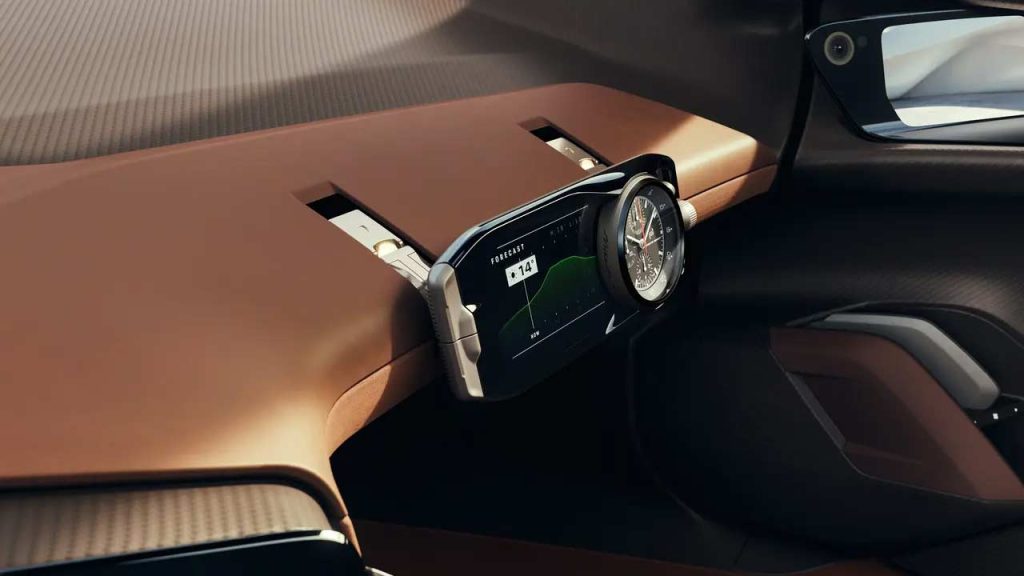The Porsche Mission R concept we saw in late 2021 is most likely getting baked into an all-electric 718, but you know, you need to supply Porsche VIPs with a few hypercars as well, right? Well, I think that’s what the Mission X is mostly about. The concept made its debut on the eve of the ‘75 Years of Porsche Sports Cars’ exhibition opening at the Porsche Museum in Stuttgart-Zuffenhausen. Exactly 75 years ago, on 8 June 1948, the 356 ‘No. 1’ Roadster became the first Porsche-branded automobile to receive its general operating permit.
But anyway, according to Oliver Blume, Chairman of the Executive Board of Porsche AG, the Mission X concept “picks up the torch of iconic sports cars of decades past, such as the 959, the Carrera GT and the 918 Spyder”, and offers “critical impetus for the evolutionary development of future vehicle concepts”. I’m not entirely sure what that means, but I think it’s safe to assume that there’s gonna be a production version or at least an iteration of this on sale in the not-too-distant future.
“The Porsche Mission X is a technology beacon for the sports car of the future,” says Oliver Blume. Standing next to him in the frame above is Michael Mauer, Head of Style Porsche.
Measuring approximately 4.5 metres long, 2 metres wide and less than 1.2 metres tall, the Mission X concept is billed as “a relatively compact hypercar”. With a wheelbase of 2.73 metres, it has the dimensions of the Carrera GT and 918 Spyder. For aerodynamic reasons, the concept car has mixed-size tyres, with wheels measuring 20-inches at the front and 21-inches at the rear. The bodywork is finished in Rocket Metallic, a paint specially created for the concept. Design elements in a satin carbon-weave finish below the beltline add the necessary but subtle contrast.
As for the other key highlights of the concept, the rear wheels are fitted with almost transparent aeroblades designed like turbines for better cooling of the brakes; a lightweight glass dome with an exoskeleton made of carbon-fibre-reinforced plastic; Le Mans-style doors attached to the A-pillar and the roof; a new iteration of Porsche-typical four-point light signatures, and of course, a new version of the Porsche crest. According to Porsche, the headlights are a modern take of those on the 906 and 908 race cars. That active rear wing is claimed to generate more downforce than in the GT3 RS.
But anyway, the cockpit certainly gives off Carrera GT vibes with that Andalusia Brown & Kalahari Grey color theme; notice that the driver seat pads have a different color on the top section. The six-point seatbelts are hooked-up to the monocoque, and there’s what appears to be an LED strip running right in the middle of the seats. The pedals are adjustable, of course. And, that yoke-like steering has PASM, PTV+, TC/ESC and Drive Mode selection knobs, which should make things super easy for the driver when they’re on the road or track.
There’s also a passenger display to which a clock module from Porsche Design can be attached, thanks to a bayonet system. Apparently, the system combines digitally displayed route and vehicle information with an analogue stopwatch. The Mission X also features 6 cameras (3 outside and 3 inside) to record your racetrack experience to be shared later on social media.
Moving on to the juicy bits of the story, Porsche didn’t share a lot of information, but shared the following. If the Mission X goes into series production, then it should:
- be the fastest road-legal vehicle around the Nürburgring Nordschleife;
- have a power-to-weight ratio of roughly one PS per kilogram;
- achieve downforce values that are well in excess of those delivered by the current 911 GT3 RS;
- offer significantly improved charging performance with its 900-volt system architecture and charge roughly twice as quickly as Porsche’s current frontrunner, the Taycan Turbo S.
The battery is installed centrally behind the seats to keep the mass in the center and therefore make the car as agile as an ICE-powered mid-engined car.

Leave a Reply
Note: Comments that are unrelated to the post above get automatically filtered into the trash bin.
